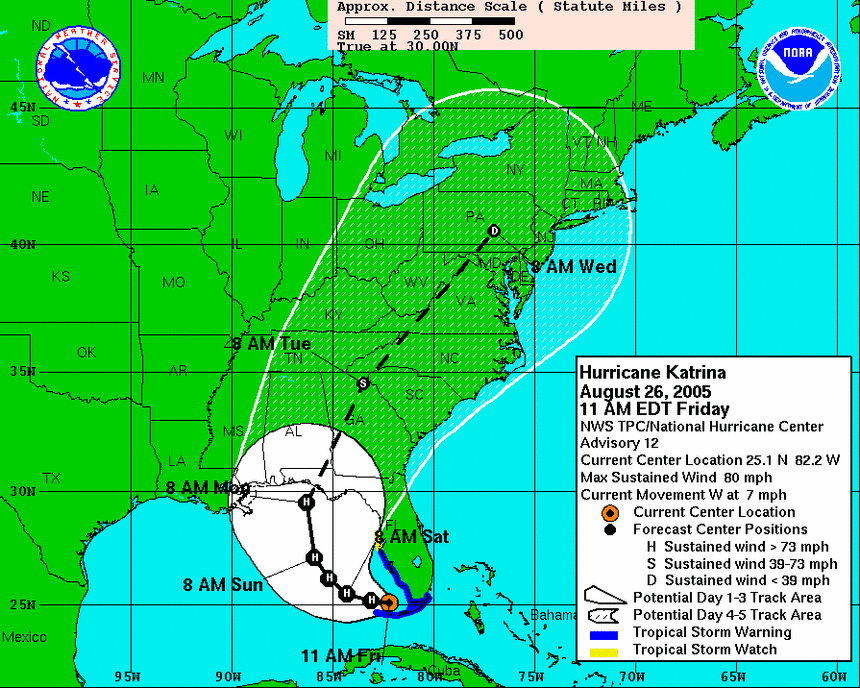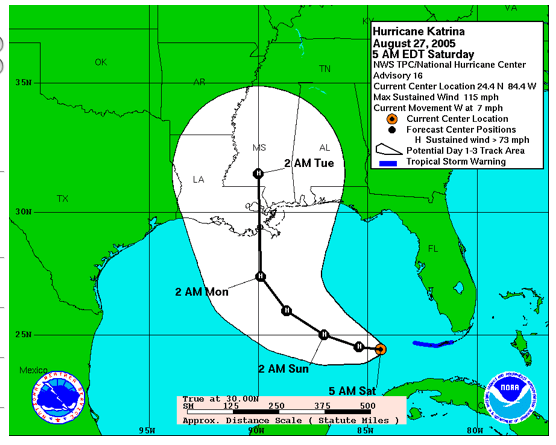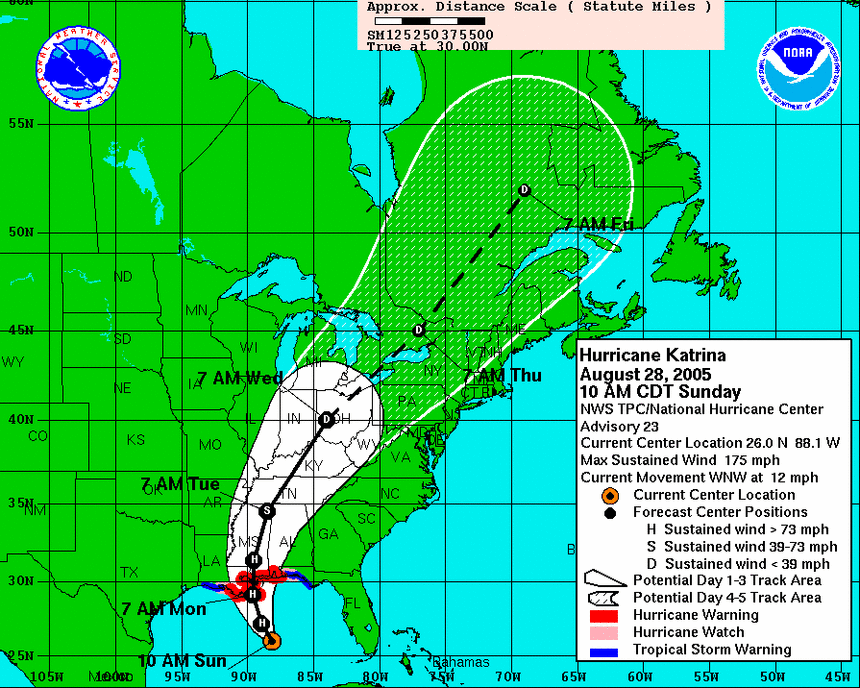
Friday, August 26th, 2005 was my birthday. A tropical depression that began on Monday, August 22 had developed into a serious storm named Katrina. By Friday it had passed over Miami and was now out in the Gulf of Mexico off Florida's western coast. There was no prediction that it would head to New Orleans. As of August 26th, the charts from the National Weather Service and The National Oceanic and Atmospheric Administration (NOAA) (pictured at right ) showed it curving up through the Florida panhandle and northward into the Carolinas and the Virginias and on up to Pennsylvania. New Orleans would have gotten the very outer fringes of the weakest side of the storm.
By 5:00 am, Saturday morning it had made an unexpected shift to the West and New Orleans is poised for a direct hit. (Left.) It is not, however, until 10 am Sunday, August 28th (Right.) that the situation has become dire. Notice that at 10 am the National Hurricane Center has put the Gulf Coast on Red Alert; notice, too, the position of the storm on Saturday compared to its position on Sunday. This storm is moving along at breakneck speed and New Orleans and all of coastal Louisiana has 24 hours to get more than a million people to safety.
All these years later, we are still answering questions.
For those of us who went through the storms, talking about them is extremely painful. Hurricanes Katrina and Rita were terribly traumatic and not a day goes by that we don't have to live them all over again. We will never be able to heal as long as we are kept back in 2005. What makes it tricky is that I am a tour guide and Katrina/Rita is history. I realize, of course, that most people who ask are genuinely curious and are looking for the information that the media failed to provide. But all too often someone's face lights up with a beaming smile and blurts out "How much did you lose in Katrina?" I was once asked "How many of your family died in the flood?" Questions like these crop up at least once a week, even all these years after the storms.
For those who want to learn about Katrina, there are two options. The Presbytere in Jackson Square has a complete Katrina exhibit that will answer all questions. It gives a timeline of events, explains what happened, how it happened, what's been done to prevent it from happening again and ends on an optimistic note. This is my recommendation for those who sincerely want to understand.
Another option is to take a Katrina Tour. There are still several available. However, please be advised that the people of The Lower Ninth Ward have begged for privacy - even reaching out directly to President Obama during his 2010 visit to New Orleans - and it is illegal for tour buses to go into the neighborhood. There are tour companies who break the law and invade their privacy in spite of it, which is another barricade to healing and progress. Be aware that the police can (and have) shut down illegal tours, leaving tourists stranded and having to get back on their own.
Sometimes we can talk about Katrina and sometimes we cannot. There is still quite a bit of Post Traumatic Stress Disorder out there and the only thing we ask is that people be understanding and compassionate about it. New Orleans has so much to offer - let us focus on the positive so that when we sit down to dinner together we can all raise a glass and say "LAISSEZ LE BON TEMPS ROULER!"




